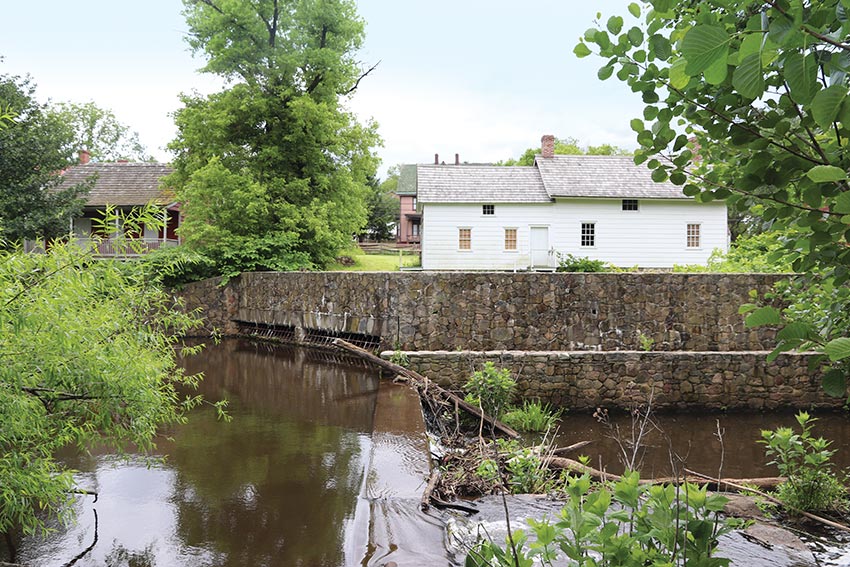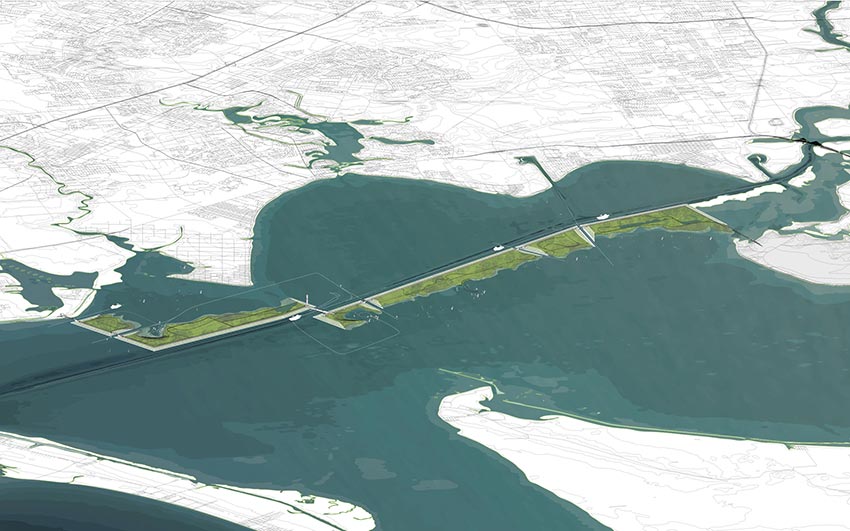Coastal Resilience
Yet navigating the politics of complex jurisdictions can make implementing optimum soft or hybrid systems problematic—as New York is discovering with its ambitious plan to protect 2.4 miles of low-lying waterfront along Manhattan’s Lower East Side. The project came out of “the Big U,” a scheme devised by a team led by the Bjarke Ingels Group (BIG) and one of the winners of the 2013 HUD Rebuild by Design competition. (The competition was conceived to generate innovative flood-resilience solutions for communities affected by Hurricane Sandy that could be widely applied.) Envisioned as a series of berms, walls, gates, and other devices, the Big U would form a continuous barrier, wrapping Lower Manhattan.
Now led by engineering firm AKRF, and including BIG, the City’s Department of Design and Construction (DDC) has proceeded with a first phase, called East Side Coastal Resilience, that would protect the most vulnerable stretch along the East River. Two years in, the project was delayed and expensively revised to add a network of storage pipes that will run inside the barrier, because the amount of inland runoff had been underestimated. (Disclosure: I worked for DDC, but not on either of its projects discussed in this story.) Last fall, the team unveiled another major revision. Designed in secret, this latest scheme would replace an existing 57.5-acre park along the river, raising it about 8 feet, an elevation higher than anticipated 100-year floods. The original design would have placed the protective elements inland of the park, adjacent to a major highway, leaving the park largely -unaffected. The new design, by raising the bulkhead at the water’s edge to the necessary height, requires the replacement of the park at the higher level on fill. Even with the much-expanded scope this change entails, the City “will deliver protection one full hurricane season sooner than the original design,” -according to Phil Ortiz, spokesman for the Mayor’s Office of Resiliency, which is overseeing the project.
Meeting a 2023 expiration date for HUD funding and other issues of operational and construction convenience appear to have been the motivation for the change in approach—resulting in a project of diminished quality in the eyes of neighbors shut out of the redesign process. “We are deeply disappointed with the City’s last-minute rationale to spend an additional $700 million [for a total cost of $1.45 billion] without studying alternatives or fostering a public conversation on tradeoffs,” said a statement by the organizations that had led the Rebuild by Design competition.

INCREMENTAL STRATEGY On New York’s Staten Island, once-degraded stream beds have been restored and linked together. The network helps control outflow volume and prevent flooding in low-lying neighborhoods.
The City could have learned lessons from a decades-long project in its own backyard that is a national model for reducing the effects of inland storms and flooding. DDC has linked and upgraded stream fragments on Staten Island to create a network of stormwater--management waterways called Bluebelts. The program restores degraded stream beds with widened channels and naturalized edges. The streams and piped drainage flow into constructed stormwater ponds and wetlands that filter trash and control outflow volumes. With water managed at stages along the length of each stream, torrents no longer inundate the lowest-lying communities near the shore. Such incremental and low-tech solutions grow in appeal as the Federal government finances fewer projects that rely principally on large-scale civil-engineering works, such as East Side Coastal Resilience.

Hybrid solution Rogers Partners Architects and collaborators propose combining hard and soft flood protections for Galveston Bay that would include floodgates and new parkland, created from soils dredged from a shipping channel.









